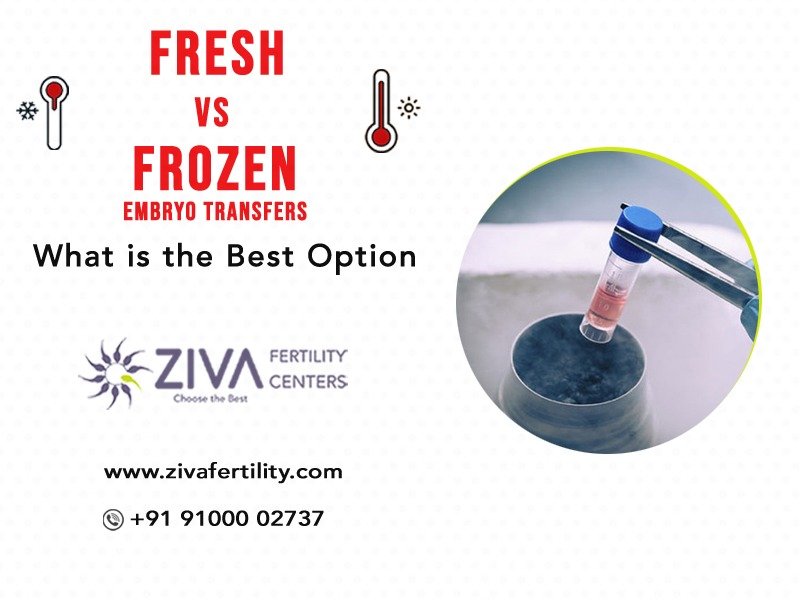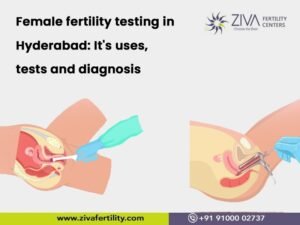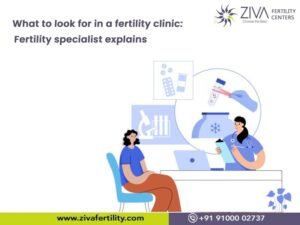Fresh vs frozen embryos have been a long debate amongst fertility specialists. Every small decision taken during an ART (Assisted Reproductive Technology) has a considerable impact on conceiving and the subsequent growth of the baby in the womb. One of the growing popular opinions among fertility treatment providers is that chances of pregnancy are higher with frozen embryos. But this is not a simple decision since your situation plays a significant role in deciding which one is better. A combination of factors determines if you should go for fresh or frozen embryos during your IVF journey.
What is a fresh embryo transfer?
Eggs are retrieved from a woman’s ovaries. A reproductive endocrinologist fertilises these retrieved eggs with your partner’s or a donor’s sperm. After fertilisation, the resultant fresh embryo is transferred back into her uterus three to five days after the egg retrieval.

What is a frozen embryo transfer?
The process of egg retrieval and subsequent fertilisation are similar to fresh embryo transfer. But the difference is that in a frozen embryo scenario, the embryo transfer (FET) can occur years after a woman’s egg retrieval and fertilisation with sperm. Then, when the woman is ready for conception, these frozen embryos are thawed before transferring into the woman’s uterus for a hopeful conception.
What does research say about fresh and frozen embryo transfers?
Many fertility clinics and the CDC (USA) have reported better success rates with FET than fresh embryo transfer. As per the study published by the New England Journal of Medicine, in 2018, women having infertility issues due to PCOS (polycystic ovary syndrome) gave birth to healthy children with frozen embryo transfer. Similar studies have been reported in The British Medical Journal, too. More critical is that high-quality and healthy embryos should be selected for transfer.
Factors affecting the choice between a fresh and frozen embryo transfer
There are multiple factors under consideration for both FET and fresh success rates. Factors to consider between freezing your embryos or pursuing a fresh transfer are:-
- Age of the woman
- Donors age at egg freezing if any donor is used, be it an egg donor or sperm donor.
- The quality of sperm used for fertilisation.
- Overall medical health.
- Mental and emotional readiness for pregnancy.
Research conducted in 2019 showcases some exciting facts about fresh and frozen embryo transfers:
- Live birth rate is 79% with “higher quality embryos” and 64% with “good quality embryos”.
- The live birth rate dropped to 28% with poor quality embryos.
- Chances of a high-quality embryo increase if the woman’s age is below 35.
- If women choose to transfer a frozen or a fresh embryo above the age of 35, the embryos might be of low quality.
So It is evident that deciding between a fresh or a frozen embryo is secondary compared to age which plays a significant role and is the primary cause for consideration.
Benefits of frozen embryo transfers during IVF

Frozen embryo transfers are cost-effective:- It is essential to know that IVF is an expensive treatment. If the first attempt does not succeed with fresh embryos, the couple will have to reinvest the same amount for a second cycle. But in the case of frozen embryos, the second time, the cost will be only for transferring the frozen embryos into the woman’s uterus. Therefore, it will save the cost of creating embryos again.
Flexibility and Choice:- The couple and especially women choose to decide to have children when they are ready. They don’t have to worry about fertility issues. They can choose to become pregnant even after the age of 35. It is also helpful in cases of infertility due to chemotherapy. Before undergoing radiation or chemotherapy, the couple can fertilise and freeze the embryos so that men and women can still achieve their dreams of parenthood with conventional IVF.
Reduced mental and physical stress for the woman:-Every time you try an IVF cycle, producing fresh embryos is quite a physical and emotional strain on the woman. Instead, if they do this once and freeze the embryos, you won’t need to go through another egg retrieval procedure as you already have a batch of embryos ready for use. The only medication administered will be to thicken the lining of your uterus before embryo transfer.
Genetic testing through PGD/PGS:- PGD is a form of chromosomal testing that allows embryologists and geneticists to distinguish between embryos that are normal and those which carry a specific inheritable genetic disorder such as cystic fibrosis (CF) or spinal muscular atrophy (SMA). Fertility specialists use this information to determine which embryos to transfer into the woman’s uterus.
PGS is a technique that allows embryologists and geneticists to look at the chromosomes in each embryo. This form of screening can determine whether an embryo has too many or too few chromosomes (aneuploidy). It can also see whether part of a chromosome has broken off and reattached on another chromosomes (translocation). Examples of these disorders include Down’s syndrome or Turner’s syndrome.
These screenings will help identify the embryo(s) with the highest chance of successful implantation.
ZIVA fertility center has specialists who have been pioneers in handling both types of embryo transfers. Our wealth of knowledge will serve as a guiding factor for you when you decide to undergo an IVF. We are delighted to let you know that we had success with both types of embryo transfers at the ZIVA fertility centers, and we will make our suggestions based on what’s best for you. Reach us today at +91-9100002737, +91 93474 06900, Info@zivafertility.com or visit us at https://zivafertility.com/
















